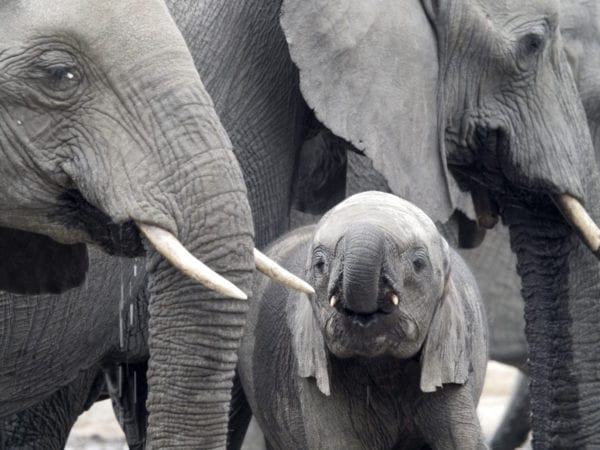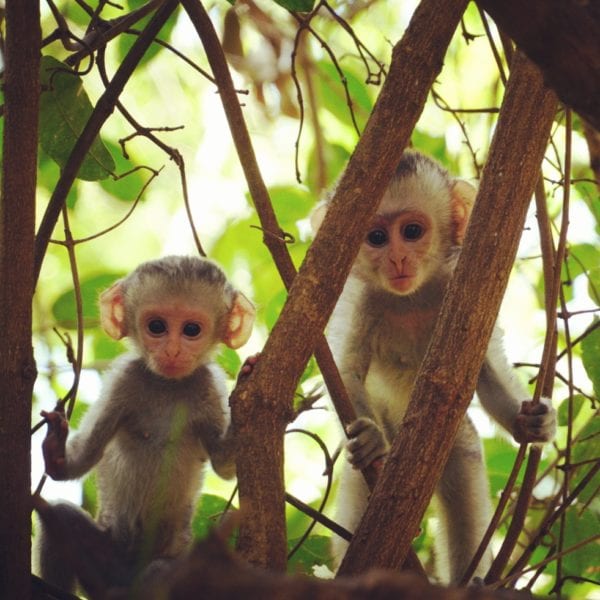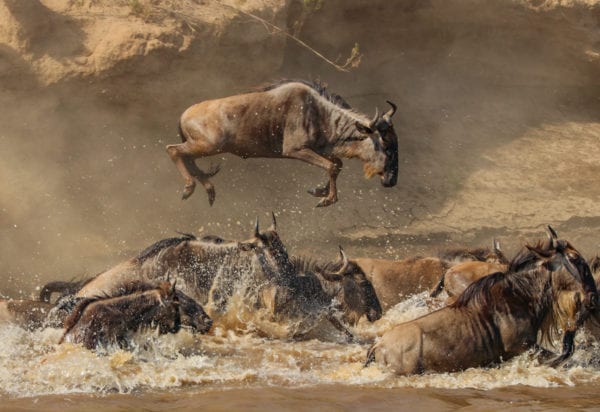With such inspiring subject matter to play with, it’s almost impossible to take a bad photo on safari.
And these days, with the great leaps and bounds in camera, video and editing technology over the past decade, anyone can look like a master photographer in their image results.
Even with only your trusty smartphone or tablet, just being in the moment, surrounded by the majesty of the African continent, will make you the envy of your friends, loved ones and social media followers.
Being intimate with your equipment’s capabilities plus any shortfalls, as well as practicing taking photos in various situations and lighting will go a long way towards ensuring you have magic memories to take away from your trip of a lifetime.
Rothschild Safaris can offer these 6 super tips for bringing out the best in your photography skills and put more life, action and color into the frame while you have fun.
-
Patience is a virtue.
And for spectacular safari photography, it is usually also vital.
Wildlife photographers may take months of daily setting up their extensive and expensive camera and video equipment and spending much of that time doing little else but patiently waiting for the “hero” shots that then end up in glossy travel magazines or videos for Discovery Channel and Sir Richard Attenborough documentaries.
Finding that quintessential shot may result in those big pay days for them. But it’s important to be realistic, especially if you are an amateur photographer at best or only have a few days to capture your safari “Kodak moments”.
Of course, anyone can get lucky and these are the shots to savor in your coffee table photo books and on canvas on your walls.

To increase your chances of good luck, our advice is to take a diverse selection of photos – from big-picture landscapes to tiny wildflowers growing out of the arid soil, a range of wildlife in various poses and from many angles, the African people themselves in portrait and going about their daily lives, and even the same panorama but at differing times of the day from sunrise to twilight.
For wildlife photography, the longer you take the time to watch the animals to better understand their relationships and behavior, the more likely you are to produce outstanding photos.
You’ll capture the caring elephant mother snuggling her baby with her trunk and spot part of a troop of baboons through the undergrowth. Your expert guide can also help in that regard as they want to ensure you have outstanding safari experiences every time.
Finally, a good rule of thumb is that for every 10 photos you take, you’re bound to get at least one cracker!
-
Bigger isn’t always better.
Most people who go on safari in Africa long to snap the Big Five: lion, leopard, rhinoceros, elephant and Cape buffalo. But don’t be too disappointed if any of these prove elusive on your trip.
You’ll get just as many thrills photographing mirror reflections on a watering hole, zebras crossing the road in front of you, hippos opening their massive jaws and giraffes nibbling the sweet new growth of a tree right outside your lodge.
And then there’s colorful flora and shy fauna you encounter that few holidaymakers may have the privilege of seeing – such as a black-backed jackal or large grey mongoose, an eagle in flight overhead, any number of sunbaking lizards or wild African violets and cacti.
Rothschild Safaris believes the best way to get up close and personal with the “big little things” is to book a walking safari and our Travel Designers are only too willing to help in that regard.

-
Zooming along the track.
Everyone loves to see the detail of African animals up close – the wrinkles of an elephant trunk, the signature stripes of a zebra or looking into the menacing eye of a Cape buffalo bull.
Zooming too far, of course, can pixelate/blur the final shot and render it unusable.
Sometimes it is far better to tell the story of a single animal enveloped by its immense, majestic natural setting.
But if in easy range, concentrate on ensuring the animal’s eyes are dead sharp. Less sharpness in other parts of the body is generally more acceptable.
When zooming in to get “the shot”, make sure you ground yourself, either by bracing against a car door or resting on the seat in front. This will help prevent movement in your photos that will look blurry and out of focus.
Your safari guide is used to having photographers on board on safari and will be expert in getting you as close as possible to the animals while remaining at a safe distance from any danger.
But they aren’t adept at photography necessarily so you can still make suggestions on lining up the vehicle to get ideal angles for your photos. They’re there to help enrich your safari experience.
-
Be prepared for anything.
If you’ve never been on safari before, be prepared to be amazed.
That means taking along those extra couple of memory cards and perhaps a second charged battery for your digital camera or video for all the photos and footage you’ll want to create.
The temptation is all around to take action shots and video so you’ll use up space quickly on memory cards (try to go for the larger size cards so you’re not changing cards throughout the day and night and perhaps missing some of that action).
Download/back-up your wonderful photos on a laptop or external hard drive at the end of each day to ensure you’ll never lose them or the memory cards by the time you arrive home. That way, you can also format the cards to use again the next day (though a good practice is always to keep the originals of any shoot).
For best results, consider investing in a good SLR camera and a couple of lenses (at least a 300mm lens for wildlife photography to appear to bring the animals closer and avoid frustration of them being tiny specks in the distance).
Perhaps two cameras with different lenses would help eliminate the fuss of changing the lens (and possibly missing your big opportunity to snap that spooked springbok bounding away).
Ensure you have a sturdy equipment bag that is waterproof and dustproof to keep cameras in tip-top shape throughout the trip, as well as a smaller bag to wrap around your camera/lens within.
As well as packing wet weather gear for your camera and lens, a dry cloth will come in handy to clean your lens if it does get wet.
Be familiar with your equipment before pulling it out on arrival in Africa or that first safari. Understand how to use all the settings and camera capabilities from your manual to get the most out of your equipment and optimize the photographic opportunities.
Practice in the weeks leading up to the big trip around your own backyard or neighborhood, snapping people, flowers and your pet at various angles and moments throughout the day. Practice makes perfect always!
Technical knowledge is great to have but having an eye for composition and what looks good in the frame is extremely important, too. You’ll instantly know when you have a shot that simply pops!
Good light can make or break nature photography. So even with expensive gear, photos can appear “flat” without great natural light.
Be prepared to wake before sunrise for calm mirror images on a lake or linger a little longer in the afternoon to find animals waking from their afternoon naps or colors of red, pink, blue and purple as the sun sets on the horizon.
Overcast weather is like a big softbox, offering workable light conditions at any time of the day.
Noon sun can bring too much light or harsh shadows to photos but then again, it can be used to your advantage – highlighting the heat surrounding animals drinking at a waterhole, for example.

-
Keep your eyes on the prize.
Don’t spend your whole safari experience with an eye behind the lens of a camera.
Put it down, breath in the great outdoors and appreciate your surroundings and the amazing, unique wildlife that call it home.
What’s the point of snap, snap, snapping the lion walking past your vehicle and sending your digital camera ïnto a “busy” frenzy if you can’t feel the goosebumps of this breathtaking experience? Surely that makes for a better story to tell back home.
A good pair of binoculars will bring the surroundings and animals much closer than with the naked eye to ensure those “mind pictures” are much clearer, too, without you fussing with changing cameras and lenses and forcing you to miss that lioness yawn under the shade of a tree or the cheetah running down its prey.
-
Safety first always.
This is the most important tip of all.
Nothing is worth risking your life for a photograph.
People do stupid things all over the world in pursuit of the perfect photo. In the excitement of the moment, we can all get carried away, but ensure there’s a little voice in your head telling you to stay safe.
Your guide will tell you never to stand up, for example, in a safari vehicle for a better shot. That’s because, while the animals are used to seeing these vehicles in their surroundings, standing up changes the shape of the vehicle and the wildlife may feel threatened and attack or run away from view.
All animals you’ll encounter on safari are wild and unpredictable. So never harass creatures big or small to get them to move or “do something” for the camera.
Don’t whistle or make loud noises to get their attention.
Never interfere with the scene unfolding in front of you, for example, in a hunt.
Let sleeping dogs (and lions) lie. Be an observer only.
And also remember that as well as being unethical, your actions to harass the animals also are likely to annoy others in the safari vehicle.
